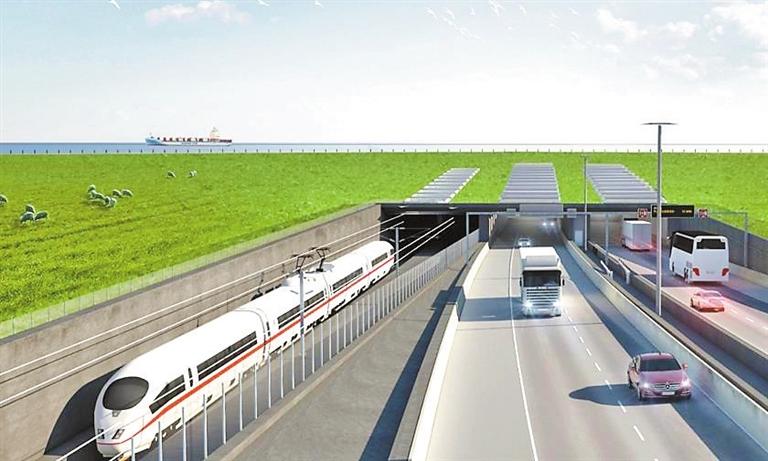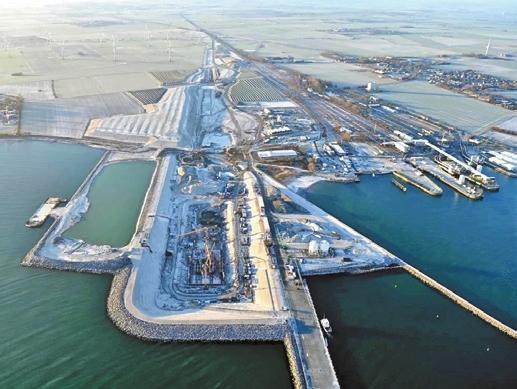

DESCENDING up to 40 meters beneath the Baltic Sea, the world’s longest immersed tunnel will link Denmark and Germany, slashing journey times between the two countries when it opens in 2029. The first tunnel element of the Fehmarnbelt Tunnel was inaugurated June 17 by King Frederik X of Denmark, in what was a milestone moment four years after construction began in 2020, with more than a decade of planning preceding that. On the Danish side, east of Rødbyhavn, the factory that will build the 89 massive concrete sections that will make up the tunnel was completed last year. Fermern A/S, the state-owned Danish company in charge of the project, says it’s the largest and most advanced production facility of its kind. The sections will be placed just beneath the seabed, about 40 meters below sea level at the deepest point, and moved into place by barges and cranes. Positioning the sections will take roughly three years. The tunnel, which will be 18 kilometers long, is one of Europe’s largest infrastructure projects, with a construction budget of over 7 billion euros (US$7.1 billion). By way of comparison, the 50-kilometer Channel Tunnel linking England and France, completed in 1993, cost the equivalent of £12 billion (US$13.6 billion) in today’s money. Although longer than the Fehmarnbelt Tunnel, the Channel Tunnel was made using a boring machine, rather than by immersing pre-built tunnel sections. It will be built across the Fehmarn Belt, a strait between the German island of Fehmarn and the Danish island of Lolland, and is designed as an alternative to the current ferry service from Rødby and Puttgarden, which carries millions of passengers every year. Where the crossing now takes 45 minutes by ferry, it will take just seven minutes by train and 10 minutes by car. The tunnel, whose official name is Fehmarnbelt Fixed Link, will also be the longest combined road and rail tunnel anywhere in the world. It will comprise two double-lane motorways — separated by a service passageway — and two electrified rail tracks. “Today, if you were to take a train trip from Copenhagen to Hamburg, it would take you around four and a half hours,” Jens Ole Kaslund, technical director at Femern A/S, said in 2022. “When the tunnel will be completed, the same journey will take two and a half hours. “Today a lot of people fly between the two cities, but in the future it will be better to just take the train,” he adds. Besides the benefits to passenger trains and cars, the tunnel will have a positive impact on freight trucks and trains, Kaslund said, because it creates a land route between Sweden and Central Europe that will be 160 kilometers shorter than today. At the moment, traffic between the Scandinavian peninsula and Germany via Denmark can either take the ferry across the Fehmarnbelt or a longer route via bridges between the islands of Zealand, Funen and the Jutland peninsula. Several other phases of the project are underway, including the digging of the actual trench that will host the tunnel. Each section will be 217 meters long, 42 meters wide and 9 meters tall. Weighing in at 73,000 metric tons each, they will be as heavy as more than 13,000 elephants. (SD-Agencies) | 
